This article was co-authored by Roy Nattiv, MD. Dr. Roy Nattiv is a Board-Certified Pediatric Gastroenterologist in Los Angeles, California. With over 20 years of experience he specializes in a broad range of pediatric gastrointestinal and nutritional illnesses such as constipation, diarrhea, reflux, food allergies, poor weight gain, SIBO, IBD, and IBS. He completed his pediatric residency at the Children’s Hospital at Montefiore, Albert Einstein College of Medicine in New York, and his fellowship at the University of California, San Francisco (UCSF). While at UCSF, he was a California Institute of Regenerative Medicine (CIRM) fellowship trainee and was awarded the North American Society for Pediatric Gastroenterology, Hepatology, and Nutrition (NASPGHAN) Fellow to Faculty Award in Pediatric IBD Research. Dr. Nattiv received his undergrad degree from the University of California, Berkeley, and his medical degree (MD) from the Sackler School of Medicine in Tel Aviv, Israel.
There are 18 references cited in this article, which can be found at the bottom of the page.
wikiHow marks an article as reader-approved once it receives enough positive feedback. This article received 13 testimonials and 83% of readers who voted found it helpful, earning it our reader-approved status.
This article has been viewed 325,298 times.
Acid reflux is experienced when the stomach fails to close and acid flows back into the esophagus, irritating the lining and, as a result, causing acid reflux. One of the best ways to prevent this from happening is raising your bed, either with bed risers or therapeutic pillows, both of which we'll discuss. To get started on relieving the pain of acid reflux, start with Step 1 below.
Steps
Raising Your Bed Effectively
-
1Select your material. The material for bed head elevation should be selected carefully. A therapeutic wedge pillow or bed risers (regardless of material) is advisable. These aids ensure that the ideal height remains consistent every day. Here are your three main options:
- The easiest way is to put a block of cement, bricks or books under the feet of your bed near the side of your head.
- If that's not an option, you can invest in plastic or wooden bed risers that support bed posts or legs. There are also "bed wedges" that you can put between your mattress and box spring, or on your mattress under the sheets.
- Alternatively, you can use a therapeutic wedge pillow to simulate an elevated bed. It's just what it sounds like -- a firmer, wedge-shaped pillow. These, however, may lead to neck pain.[1]
-
2Elevate your bed to the right height. The extent of bed head elevation should be measured meticulously. Most studies suggest that the ideal height of bed head elevation is at least 6-8 inches (15-20 centimeters). This height is medically proven to prevent acid reflux when lying down.[2]
- In actuality, the more elevation, the better. However, you still have to be able to comfortably sleep. Most people find that 6-8 inches is that magic ideal.[3]
- Using a wedge pillow secures your position as you sleep and prevents sliding down. Apart from possible neck pain, it's as effective as actually elevating your bed. People have a tendency to slide down from regular pillows; the wedge pillow keeps you elevated all night.
Advertisement -
3Elevate the shoulder blades, too. The intersection between the stomach and esophagus is located approximately at the lower part of the shoulder blades. Therefore, the shoulder blades must also be elevated to prevent acid reflux.
- If you don't also elevate your torso, you'll likely find that you not only still experience acid reflux, but that it's harder to get comfortable due to neck and back pain.
-
4Never use multiple pillows for bed head elevation. Multiple pillows can place the head at an angle which compresses the stomach. This will aggravate acid reflux and just make it worse.
- Try not to use regular pillows while sleeping because it can put extra pressure on the abdomen, pushing stomach contents up. You'll also likely slide down, defeating the purpose.
-
5Understand why it works. Acid reflux is more common when lying down because the gravity does not oppose the reflux as it does in an upright position. The reduced effect of gravity also allows the acidic content to stay in your food tube longer and reach the mouth easily.
- Bead head elevation drastically reduces contact of the lining of the food tube with acidic contents. It also reduces sleep disturbances of patients.
Preventing Acid Reflux
-
1Do not eat before bed. Otherwise all your efforts may be in vain! Go to bed with an empty or dry stomach. Do not eat 3 hours before going to bed and do not drink 2 hours before going to bed. If you do, an episode of acid reflux will be even more likely.
- Avoid lying down after eating, too. Wait for at least 3 hours before lying down after eating to make sure that food is digested already. It gives your body time to empty the stomach, too.
-
2Avoid fatty and spicy foods. Both fatty and spicy foods exacerbate symptoms. Stay away from salsa, hot sauce including Tapatio and Sriracha, spicy chips like Hot Cheetos or Takis, wasabi, tomato-based sauces including marinara and spaghetti sauce, pizza, and fried foods.
- Fatty foods, such as fried foods and fast food meals stay longer in the stomach and are generally heavy and difficult to digest. The longer stay and more content in the intersection between the stomach and food tube promotes acid reflux.
- Chocolates are high in fat and caffeine, which is also bad for acid reflux. It is also high in cocoa which prompts more acid production in the stomach and acid reflux.
- Fried foods, tomato sauce, alcohol, garlic, and onion are all known acid-reflux triggers.
-
3Chew gum. Chewing gum increases the production of saliva, nature’s gift for acid reflux patients. If you know you're about to consume something you shouldn't, bring a pack of gum with you to potentially offset the complications.
- Be careful not to choose the mint flavour though. Mint promotes acid reflux by momentarily relaxing the muscle valves and increasing acid production in the stomach.
-
4Wear loose fitting clothes. When your clothes are tight, pressure is put upon your stomach. This added constriction of the abdominal area encourages stomach acid to work its way into your esophagus, leading to acid reflux.
- If you're engaging in a heavy meal or eating foods that are known to trigger your acid reflux, be sure to stay away from tight clothes (including underwear) that may exacerbate the problem.
-
5Stay away from coffee and orange juice. Acidic, carbonated, and caffeinated drinks like coffee, orange juice, lemonade, alcohol, and soda exacerbate symptoms of acid reflux.
- Coffee keeps a person perky by injecting caffeine into the system. This caffeine also stimulates the acid production inside the stomach. Hyperacidity makes it easier for back flow of stomach contents.
- Orange juice and other citrus drinks are high in vitamin C or ascorbic acid. Ascorbic acid raises the acidity level in the stomach further and promotes acid reflux.
-
6Do more physical activity. Physical activity will improve the symptoms of acid reflux by decreasing the compression of the stomach. The key is to get 30 minutes of physical activity a day. This 30-minue goal can be divided into multiple sessions. For example, 10-minute walking sessions can be done thrice a day.
- Walking for 30 minutes every day will help accelerate fat loss. For people who find walking boring, other alternatives are gardening, swimming, walking the dog, and window shopping.
-
7Watch your weight. Overweight and obese individuals complain of acid reflux because the extra fat in the tummy compresses the stomach. This increases the pressure inside the stomach and forces its contents to flow back into the food tube. To reduce your acid reflux, you may want to reduce your weight.[4]
- Avoid overeating to not only watch your weight but to lessen the chance of acid reflux. Eat smaller meals more often to maintain a desirable weight and avoid overloading your stomach.
-
8Stop smoking. Smoking is a known trigger of acid reflux. Over time, it can cause severe injury and cause esophageal cancer. Quit smoking now and feel immediate relief.[5]
- There are a number of reasons you should quit smoking, apart from reducing acid reflux. If you do, you'll also reduce your risk of heart disease, diabetes, other cancers, and you'll see an improvement in your hair, skin, nails, and teeth.
Treating It Medically
-
1Consider taking antacids. Antacids, such as aluminum hydroxide magnesium hydroxide (a liquid), neutralize the acidic content in the food tube and stomach. A cool, soothing relief is noticeable as the liquid form passes through your esophagus.
- The daily dose is usually 2 to 4 teaspoons (10 to 20 ml) taken 4 times a day. It is best taken 20 minutes to one hour after a meal.[6]
- Antacids may bring about side effects -- namely constipation or diarrhea.
-
2Think about taking Proton Pump Inhibitors (PPIs). PPIs are one of the best ways to treat acid reflux. It works by turning off the pump that produces hydrogen, an important component of acid in the stomach. Less hydrogen production means less irritation to your esophagus. For maximum effect, PPIs are taken at least 30 minutes before breakfast.
- The daily dose for different types of PPIs are:
Omeprazole 20 mg once a day
Lansoprazole 30 mg once a day
Pantoprazole 40 mg once a day
Esomeprazole 40 mg once a day
Rabeprazole 20 mg once a day - PPIs may present side effects of headache, stomachache, and an urge to vomit.
- The daily dose for different types of PPIs are:
-
3Look into taking H2 receptor blockers. H2 receptor’s sole purpose in the stomach is to produce acid. H2 receptor blockers antagonize this production of acid. These are an alternative to PPIs that your doctor may recommend.
- The daily dose for different types of H2 receptor blockers are:
Cimetidine 300 mg 4 times a day
Ranitidine 150 mg twice daily
Famotidine 20 mg twice daily
Nizatidine 150 mg twice daily - H2 receptor blockers may give side effects of headache, constipation, and diarrhea.
- The daily dose for different types of H2 receptor blockers are:
-
4Visit your doctor for an expert opinion. Medical therapy is a useful addition to home remedies in relieving acid reflux. The medicines act by either neutralizing acid or stopping acid production. Apart from antacids (available in any pharmacy or grocery store), your doctor will know which prescription option is best for you.
- Acid is an important component of stomach immunity and digestive processes. Extended period of medical therapy may compromise the digestive system. The use of medicines for more than 4 weeks should be under the discretion of your doctor.
Understanding Acid Reflux
-
1Know that you're not alone. Acid reflux or gastroesophageal reflux disease (GERD) is a prevailing complaint in the general population. Recent studies in the United States conclude that 7% of the population complains of acid reflux daily. Moreover, 15% of individuals experience this symptom at least once a week.
- That's not to say that there's no hope. With adequate treatment, this number could be a lot less. Plenty of people just don't bother to take action. In fact, acid reflux rates were 50% higher ten years ago.[7]
-
2Understand what is going on in your body. The esophagus is a food tube that connects the mouth and the stomach. Food is mixed with acid in the stomach to prepare it for proper absorption by the body. This where the "acid" in "acid reflux" comes in.
- Normally, the stomach contents go down to the intestines once the contents are ready for digestion. The two valves, composed of muscle, at the top and bottom of the food tube prevent the back flow of acidic contents from the stomach into the food tube and mouth.[8]
- Acid reflux is caused by the weakening of the muscular valves at the intersection between the food tube and the stomach.[9] The acid from stomach juices and mixed food irritates the food tube. Worsening of the reflux allows the acidic content to reach the mouth.
-
3Know the risk factors. A number of things going on in your life can put you at risk for or be the cause of your acid reflux. The factors include the following:
- Pregnancy. The ascending womb displaces the stomach and other abdominal contents upward and backward. Consequently, this sets up acid reflux.
- Smoking. Smoking increases the acidity of stomach contents. Moreover, it weakens the muscle valves that prevent acidic contents from reaching the food tube.
- Obesity. The extra fat in the abdomen compresses the stomach and raises its pressure inside. The acidic contents will force its way back into the food tube once the internal stomach pressure becomes too high.
- Tight-fitting clothes . Constriction in the abdominal area increases the pressure within the stomach and causes reversal of flow of stomach contents.
- Heavy meals. The stomach stretches in the upper part to take in the extra volume. Therefore, more acidic content is present in the intersection between the stomach and food tube.
- Lying flat on the back. Lying flat on the back, especially after a meal, shifts the stomach contents nearer to the intersection between the stomach and food tube.
- Diabetes. Untreated diabetes results in nerve damage including the vagus nerve, which is the one responsible for the stomach and the intestines.[10]
-
4Know what the symptoms look like. Some people aren't even aware that what they're experiencing is acid reflux. Here's what to look for:[11]
- Heartburn. Heartburn is a warm, burning sensation in the middle portion of the chest. It is often felt in this area because the food tube lies underneath the heart.[12]
- More saliva production. The body reacts to acid reflux by urging the salivary glands to increase its production. Saliva is a natural counter for acid.
- Frequent throat clearing. Throat clearing reinforces the closure of muscular valves in the food tube. The food tube and mouth gets protection from back flow of acidic contents as a result.
- Bitter taste in the mouth. Acid reflux, when serious, can reach the mouth. This will leave a very traumatic experience of a bitter taste in the mouth.[13]
- Difficulty swallowing. When acid reflux becomes severe enough to injure the lining of the food tube, a patient will complain of difficulty with swallowing. The injuries make it painful for food to travel through the food tube.
- Tooth decay. Severe acid reflux that reaches the mouth in a more consistent basis also damages the teeth.
Warnings
- Rapid progression of difficulty with swallowing associated with unintentional weight loss should prompt medical consultation. This may be a symptom of cancer.⧼thumbs_response⧽
- In older individuals, it is better to seek medical help once heartburn sets in. Heart attack can present as heartburn in the elderly.⧼thumbs_response⧽
References
- ↑ http://www.medscape.com/viewarticle/765033_4
- ↑ http://www.medscape.com/viewarticle/765033_4
- ↑ http://refluxmd.wordpress.com/elevation-therapy-for-acid-reflux/
- ↑ http://www.healthcentral.com/acid-reflux/c/70966/161799/obesity-doubles-reflux/
- ↑ http://www.patient.info/health/acid-reflux-and-oesophagitis
- ↑ http://www.medicinenet.com/gastroesophageal_reflux_disease_gerd/article.htm
- ↑ http://www.medicalnewstoday.com/articles/146619.php
- ↑ http://www.webmd.com/heartburn-gerd/guide/what-is-acid-reflux-disease
- ↑ http://www.healthline.com/health/gerd/basics
- ↑ http://www.healthcentral.com/acid-reflux/c/70966/155776/diabetes-acid/
- ↑ http://www.health.com/health/gallery/0,,20529772,00.html
- ↑ http://www.mayoclinic.org/diseases-conditions/heartburn-gerd/expert-answers/heartburn-gerd/faq-20057894
- ↑ http://www.nhs.uk/conditions/gastroesophageal-reflux-disease/Pages/Introduction.aspx
- Brunicandi, F. Charles, Dana Andersen, Timothy illiar, David Dunn, John Hunter, Jeffrey Matthews, Raphael Pollock. Schwartz's Principles of Surgery, Ninth Edition. New York: The McGraw-Hill Companies, Inc., 2009.
- Bashir AK, Sodhi JS, Zargar SA, Javid G et al. Effect of Bed Head Elevation During Sleep in Symptomatic Patients of Nocturnal Gastroesophageal Reflux .J Gastroenterol Hepatol. 2012;27(6):1078-1082.
- Kaltenbach T, Crockett S, Gerson LB. Are life style measures effective in patients with gastroesophageal reflux disease? An evidence based approach. Arch. Intern. Med. 2006; 166: 965–71.
- Longo, Dan, Dennis Kasper, J. Larry Jameson, Anthony Fauci, Stephen Hauser, and Joseph Loscalzo. Harrison’s Principles of Internal Medicine 18th edition. New York: The McGraw-Hill Companies, Inc., 2011.
- Pope CE. Gastro Esophageal Reflux Disease: Pathophysiology, Diagnosis, Management. Philadelphia: WB Saunders, 1983.
- Robertson D, Aldersley M, Shepherd H, Smith CL. Patterns of acid reflux in complicated oesophagitis. Gut 1987; 28: 1484–8.
About This Article
Acid reflux occurs when your stomach fails to close and acid flows back into the esophagus. One of the best ways to prevent this from happening is by raising your bed since acid reflux is more common when lying down. The easiest way to raise your bed is to put a block of cement, bricks, or books under the feet of your bed near the side of your head. You can also invest in a plastic or wooden bed riser that supports your bedposts or legs. There are also bed wedges that you can put between your mattress and box spring or on your mattress under the sheets. Alternatively, you can use a therapeutic wedge pillow, though these could lead to neck pain. Most studies suggest you raise your bed 6 to 8 inches. Make sure that you elevate your head, neck, and shoulder blades to get the full effect of this position. To learn how to prevent acid reflux, keep reading!





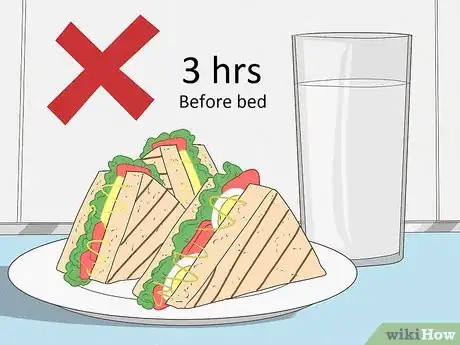
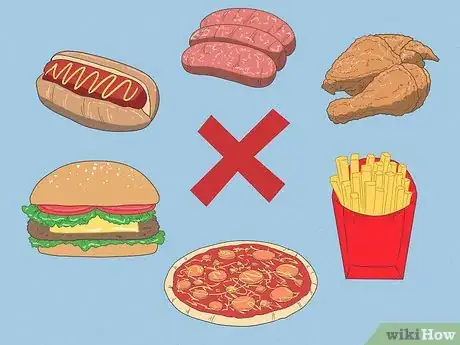
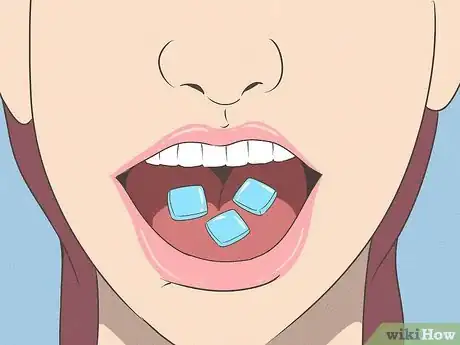



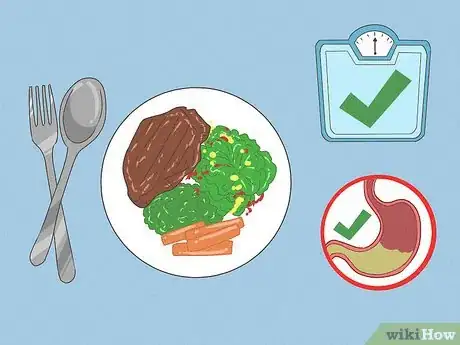






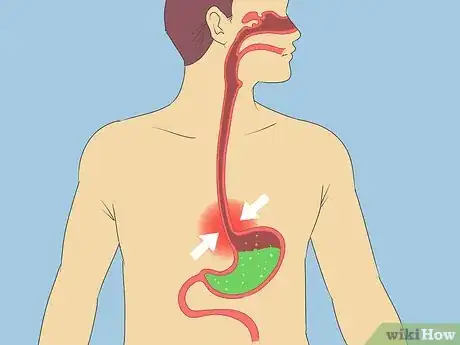
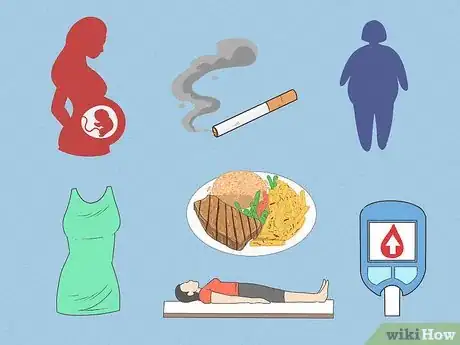
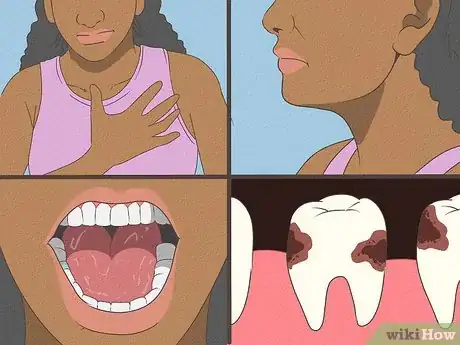

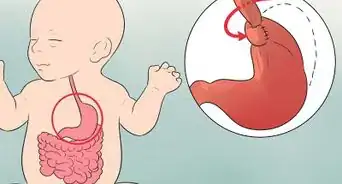






















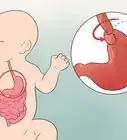





































Medical Disclaimer
The content of this article is not intended to be a substitute for professional medical advice, examination, diagnosis, or treatment. You should always contact your doctor or other qualified healthcare professional before starting, changing, or stopping any kind of health treatment.
Read More...